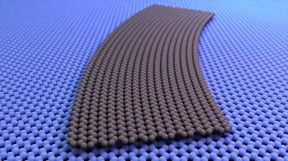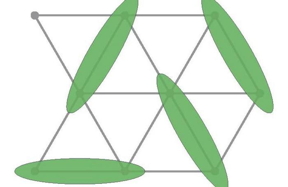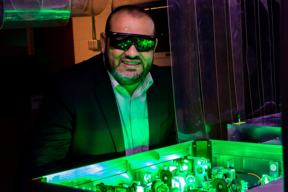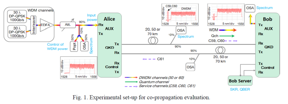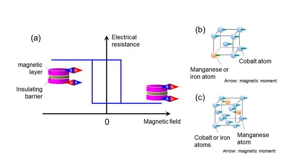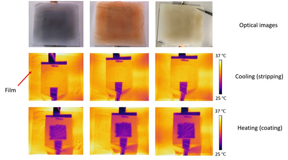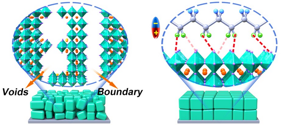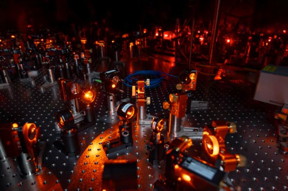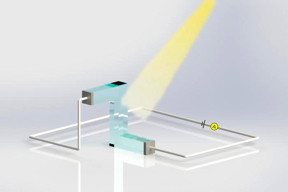Home > Press > Team undertakes study of two-dimensional transition metal chalcogenides Important biomedical application, including biosensing
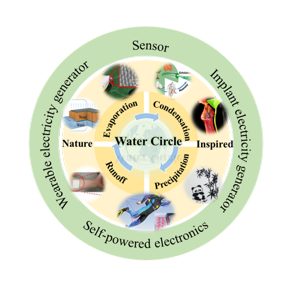 |
| Researchers present the property modulations of two-dimensional transition metal chalcogenides including their fundamental property, modulation methods, and functionalization. In addition, their applications as highly sensitive biosensors are thoroughly discussed. CREDIT Nano Research Energy, Tsinghua University Press |
Abstract:
Two-dimensional materials, like transition metal dichalcogenide, have applications in public health because of their large surface area and high surface sensitivities, along with their unique electrical, optical, and electrochemical properties. A research team has undertaken a review study of methods used to modulate the properties of two-dimensional transition metal dichalcogenide (TMD). These methods have important biomedical applications, including biosensing.
Team undertakes study of two-dimensional transition metal chalcogenides Important biomedical application, including biosensing
Tsinghua, China | Posted on December 9th, 2022The team’s goal is to present a comprehensive summarization of this promising field and show challenges and opportunities available in this research area. “In this review, we focus on the state-of-the-art methods to modulate properties of two-dimensional TMD and their applications in biosensing. In particular, we thoroughly discuss the structure, intrinsic properties, property modulation methods, and biosensing applications of TMD,” said Yu Lei, an assistant professor at the Institute of Materials Research, Shenzhen International Graduate School, Tsinghua University.
Since graphene was discovered in 2004, two-dimensional materials, such as TMD, have attracted significant attention. Because of its unique properties, two-dimensional TMD can serve as the atomically thin platforms for energy storage and conversion, photoelectric conversion, catalysis, and biosensing. TMD also displays a wide band structure and has unusual optical properties. Yet another benefit of two-dimensional TMD is that it can be produced in large quantities at a low cost.
In public health, reliable and affordable in vitro and in vivo detection of biomolecules is essential for disease prevention and diagnosis. Especially during the COVID-19 pandemic, people have suffered not only from the physical disease, but also from the psychological problems related to extensive exposure to stress. Extensive stress can result in abnormal levels in biomarkers such as serotonin, dopamine, cortisol, and epinephrine. So, it is essential that scientists find non-invasive ways to monitor these biomarkers in body fluids, such as sweat, tears, and saliva. In order for health care professionals to quickly and accurately assess a person’s stress and diagnose psychological disease, biosensors are of significant importance in the diagnostics, environmental monitoring, and forensic industries.
The team reviewed the use of two-dimensional TMD as the functional material for biosensing, the approaches to modulate the properties of TMD, and different types of TMD-based biosensors including electric, optical, and electrochemical sensors. “Public health study is always a major task in preventing, diagnosing, and fighting off the diseases. Developing ultrasensitive and selective biosensors is critical for diseases prevention and diagnosing,” said Bilu Liu, an associate professor and a principal investigator at Shenzhen Geim Graphene Center, Shenzhen International Graduate School, Tsinghua University.
Two-dimensional TMD is a very sensitive platform for biosensing. These two-dimensional TMD based electrical/optical/electrochemical sensors have been readily used for biosensors ranging from small ions and molecules, such as Ca2+, H+, H2O2, NO2, NH3, to biomolecules such as dopamine and cortisol, that are related to central nervous disease, and all the way to molecule complexities, such as bacteria, virus, and protein.
The research team determined that despite the remarkable potentials, many challenges related to TMD-based biosensors still need to be solved before they can make a real impact. They suggest several possible research directions. The team recommends that the feedback loop assisted by machine learning be used to reduce the testing time needed to build the database needed for finding the proper biomolecules and TMD pairs. Their second recommendation is the use of a feedback loop assisted by machine learning to achieve the on-demand property modulation and biomolecules/TMD database. Knowing that TMD-based composites exhibit excellent performance when constructed into devices, their third recommendation is that surface modifications, such as defects and vacancies, be adopted to improve the activity of the TMD-based composites. Their last recommendation is that low-cost manufacturing methods at low temperature be developed to prepare TMD. The current chemical vapor deposition method used to prepare TMD can lead to cracks and wrinkles. A low-cost, low-temperature method would improve the quality of the films. “As the key technical issues are solved, the devices based on two-dimensional TMD will be the overarching candidates for the new healthcare technologies,” said Lei.
The Tsinghua University team includes Yichao Bai and Linxuan Sun, and Yu Lei from the Institute of Materials Research, Tsinghua Shenzhen International Graduate School and the Guangdong Provincial Key Laboratory of Thermal Management Engineering and Materials, Tsinghua Shenzhen International Graduate School; along with Qiangmin Yu and Bilu Liu from the Institute of Materials Research, Tsinghua Shenzhen International Graduate School, and the Shenzhen Geim Graphene Center, Tsinghua-Berkeley Shenzhen Institute & Institute of Materials Research, Tsinghua Shenzhen International Graduate School.
This research is funded by the National Natural Science Foundation of China, the National Science Fund for Distinguished Young Scholars, Guangdong Innovative and Entrepreneurial Research Team Program, the Shenzhen Basic Research Project, the Scientific Research Start-up Funds at Tsinghua Shenzhen International Graduate School, and Shenzhen Basic Research Project.
####
About Tsinghua University Press
About Nano Research Energy
Nano Research Energy is launched by Tsinghua University Press, aiming at being an international, open-access and interdisciplinary journal. We will publish research on cutting-edge advanced nanomaterials and nanotechnology for energy. It is dedicated to exploring various aspects of energy-related research that utilizes nanomaterials and nanotechnology, including but not limited to energy generation, conversion, storage, conservation, clean energy, etc. Nano Research Energy will publish four types of manuscripts, that is, Communications, Research Articles, Reviews, and Perspectives in an open-access form.
About SciOpen
SciOpen is a professional open access resource for discovery of scientific and technical content published by the Tsinghua University Press and its publishing partners, providing the scholarly publishing community with innovative technology and market-leading capabilities. SciOpen provides end-to-end services across manuscript submission, peer review, content hosting, analytics, and identity management and expert advice to ensure each journal’s development by offering a range of options across all functions as Journal Layout, Production Services, Editorial Services, Marketing and Promotions, Online Functionality, etc. By digitalizing the publishing process, SciOpen widens the reach, deepens the impact, and accelerates the exchange of ideas.
For more information, please click here
Contacts:
Yao Meng
Tsinghua University Press
Office: 86-108-347-0574
Copyright © Tsinghua University Press
If you have a comment, please Contact us.Issuers of news releases, not 7th Wave, Inc. or Nanotechnology Now, are solely responsible for the accuracy of the content.
| Related Links |
| Related News Press |
News and information
![]() The National Space Society Congratulates NASA on the Success of Artemis I Same-day Launch of the Hakuto-R Lunar Landing Mission will Help Support Future Lunar Crews December 12th, 2022
The National Space Society Congratulates NASA on the Success of Artemis I Same-day Launch of the Hakuto-R Lunar Landing Mission will Help Support Future Lunar Crews December 12th, 2022
![]() Experimental nanosheet material marks a step toward the next generation of low-power, high-performance electronics December 9th, 2022
Experimental nanosheet material marks a step toward the next generation of low-power, high-performance electronics December 9th, 2022
![]() Tin selenide nanosheets enables to develop wearable tracking devices December 9th, 2022
Tin selenide nanosheets enables to develop wearable tracking devices December 9th, 2022
![]() New method of reducing carbon dioxide could be a golden solution to pollution December 9th, 2022
New method of reducing carbon dioxide could be a golden solution to pollution December 9th, 2022
2 Dimensional Materials
![]() Experimental nanosheet material marks a step toward the next generation of low-power, high-performance electronics December 9th, 2022
Experimental nanosheet material marks a step toward the next generation of low-power, high-performance electronics December 9th, 2022
![]() NIST’s grid of quantum islands could reveal secrets for powerful technologies November 18th, 2022
NIST’s grid of quantum islands could reveal secrets for powerful technologies November 18th, 2022
Possible Futures
![]() The National Space Society Congratulates NASA on the Success of Artemis I Same-day Launch of the Hakuto-R Lunar Landing Mission will Help Support Future Lunar Crews December 12th, 2022
The National Space Society Congratulates NASA on the Success of Artemis I Same-day Launch of the Hakuto-R Lunar Landing Mission will Help Support Future Lunar Crews December 12th, 2022
![]() 3D-printed decoder, AI-enabled image compression could enable higher-res displays December 9th, 2022
3D-printed decoder, AI-enabled image compression could enable higher-res displays December 9th, 2022
Nanomedicine
![]() Cutting-edge combination shows promise in patients with chemotherapy-resistant urothelial cancer November 4th, 2022
Cutting-edge combination shows promise in patients with chemotherapy-resistant urothelial cancer November 4th, 2022
Discoveries
![]() The National Space Society Congratulates NASA on the Success of Artemis I Same-day Launch of the Hakuto-R Lunar Landing Mission will Help Support Future Lunar Crews December 12th, 2022
The National Space Society Congratulates NASA on the Success of Artemis I Same-day Launch of the Hakuto-R Lunar Landing Mission will Help Support Future Lunar Crews December 12th, 2022
![]() Experimental nanosheet material marks a step toward the next generation of low-power, high-performance electronics December 9th, 2022
Experimental nanosheet material marks a step toward the next generation of low-power, high-performance electronics December 9th, 2022
![]() Tin selenide nanosheets enables to develop wearable tracking devices December 9th, 2022
Tin selenide nanosheets enables to develop wearable tracking devices December 9th, 2022
Announcements
![]() The National Space Society Congratulates NASA on the Success of Artemis I Same-day Launch of the Hakuto-R Lunar Landing Mission will Help Support Future Lunar Crews December 12th, 2022
The National Space Society Congratulates NASA on the Success of Artemis I Same-day Launch of the Hakuto-R Lunar Landing Mission will Help Support Future Lunar Crews December 12th, 2022
![]() Experimental nanosheet material marks a step toward the next generation of low-power, high-performance electronics December 9th, 2022
Experimental nanosheet material marks a step toward the next generation of low-power, high-performance electronics December 9th, 2022
![]() Tin selenide nanosheets enables to develop wearable tracking devices December 9th, 2022
Tin selenide nanosheets enables to develop wearable tracking devices December 9th, 2022
Interviews/Book Reviews/Essays/Reports/Podcasts/Journals/White papers/Posters
![]() Experimental nanosheet material marks a step toward the next generation of low-power, high-performance electronics December 9th, 2022
Experimental nanosheet material marks a step toward the next generation of low-power, high-performance electronics December 9th, 2022
![]() Tin selenide nanosheets enables to develop wearable tracking devices December 9th, 2022
Tin selenide nanosheets enables to develop wearable tracking devices December 9th, 2022
Nanobiotechnology
![]() Cutting-edge combination shows promise in patients with chemotherapy-resistant urothelial cancer November 4th, 2022
Cutting-edge combination shows promise in patients with chemotherapy-resistant urothelial cancer November 4th, 2022
- SEO Powered Content & PR Distribution. Get Amplified Today.
- Platoblockchain. Web3 Metaverse Intelligence. Knowledge Amplified. Access Here.
- Source: http://www.nanotech-now.com/news.cgi?story_id=57260
- 10
- 2022
- 9
- a
- accelerates
- access
- accuracy
- accurately
- Achieve
- across
- activity
- addition
- adopted
- advanced
- advice
- affordable
- aids
- Aiming
- All
- always
- analytics
- and
- Another
- Application
- applications
- approaches
- AREA
- Artemis
- articles
- aspects
- Assistant
- Associate
- attention
- attracted
- Australia
- available
- Bacteria
- BAND
- based
- basic
- because
- before
- being
- benefit
- biomedical
- blood
- body
- build
- candidates
- capabilities
- carbon
- carbon dioxide
- care
- Cells
- Center
- central
- challenge
- challenges
- chemical
- China
- clean energy
- COM
- combination
- comment
- Communications
- community
- complex
- complexities
- Compound
- comprehensive
- CONSERVATION
- content
- Conversion
- Cost
- could
- COVID-19
- COVID-19 pandemic
- created
- credit
- critical
- Current
- cutting-edge
- Database
- December
- dedicated
- deliver
- Derived
- Design
- Despite
- Detection
- determined
- develop
- developed
- developing
- Development
- device
- Devices
- different
- difficult
- discover
- discovered
- discovery
- discuss
- discussed
- Disease
- diseases
- displays
- Distinguished
- diverse
- during
- each
- Editorial
- Electric
- enable
- enables
- end-to-end
- energy
- Engine
- engineer
- Engineering
- ensure
- entrepreneurial
- environmental
- especially
- essential
- etc
- Ether (ETH)
- excellent
- exchange
- exhibit
- expert
- Exploring
- Exposure
- extensive
- feedback
- field
- fight
- fighting
- Find
- finding
- Focus
- form
- Foundation
- from
- functional
- functionality
- functions
- fund
- fundamental
- funded
- funds
- future
- generate
- generation
- gif
- goal
- Golden
- graduate
- Graphene
- Grid
- Growth
- Guangdong
- Health
- Health Care
- healthcare
- healthcare technologies
- help
- High
- high-performance
- highly
- hosting
- How
- HTTPS
- ideas
- Identity
- identity management
- image
- Impact
- implications
- importance
- important
- improve
- in
- Inc.
- includes
- Including
- industries
- information
- innovative
- Institute
- International
- intrinsic
- Islands
- issues
- IT
- journal
- Key
- Knowing
- laboratory
- landing
- large
- Last
- launch
- launched
- Layout
- lead
- learning
- Level
- levels
- Limited
- linked
- links
- Low
- machine
- machine learning
- major
- make
- management
- manufacturing
- many
- market-leading
- Marketing
- material
- materials
- metal
- method
- methods
- Mission
- Modifications
- molecule
- Monitor
- monitoring
- more
- nano
- Nanomaterials
- nanotechnology
- Nasa
- National
- National Science
- Natural
- Nature
- Need
- net
- New
- New Zealand
- news
- next
- November
- october
- offering
- online
- open
- opportunities
- optimal
- optimizing
- Options
- order
- pairs
- pandemic
- particular
- partners
- patients
- peer
- People
- performance
- perspectives
- PHP
- physical
- platform
- Platforms
- plato
- Plato Data Intelligence
- PlatoData
- please
- possible
- Post
- posted
- powerful
- Precision
- Prepare
- present
- press
- preventing
- Prevention
- Principal
- problems
- process
- Produced
- Production
- professional
- professionals
- Professor
- Program
- project
- promise
- promising
- Promotions
- proper
- properties
- property
- Protein
- Proteins
- provide
- provides
- providing
- Provincial
- public
- public health
- publish
- published
- Publishing
- quality
- Quantum
- quickly
- range
- ranging
- reach
- real
- Recommendation
- recommends
- reduce
- reducing
- related
- Releases
- reliable
- remarkable
- research
- researchers
- resource
- responsible
- result
- Results
- return
- reveal
- review
- reviewed
- Reviews
- Said
- Saliva
- Save
- Scholars
- School
- Science
- scientists
- Search
- Second
- selective
- sensitive
- sensors
- serve
- Services
- several
- Share
- shenzhen
- show
- Shows
- significant
- small
- snowflakes
- So
- Society
- solution
- something
- Space
- start
- Start-up
- state-of-the-art
- Step
- Still
- storage
- stress
- structure
- Study
- submission
- submit
- success
- such
- Sun
- support
- Surface
- SWEAT
- system
- targets
- Task
- team
- Technical
- Technologies
- Technology
- Testing
- The
- their
- thermal
- Third
- thoroughly
- time
- to
- tool
- toward
- Tracking
- transition
- treating
- Tsinghua
- types
- Unexpected
- unique
- university
- us
- use
- utilizes
- various
- virus
- Wave
- ways
- wearable
- wide
- will
- working
- would
- Yahoo
- young
- Zealand
- zephyrnet










